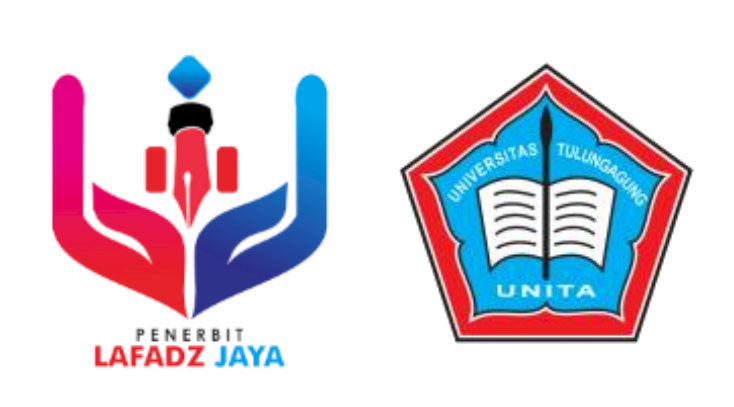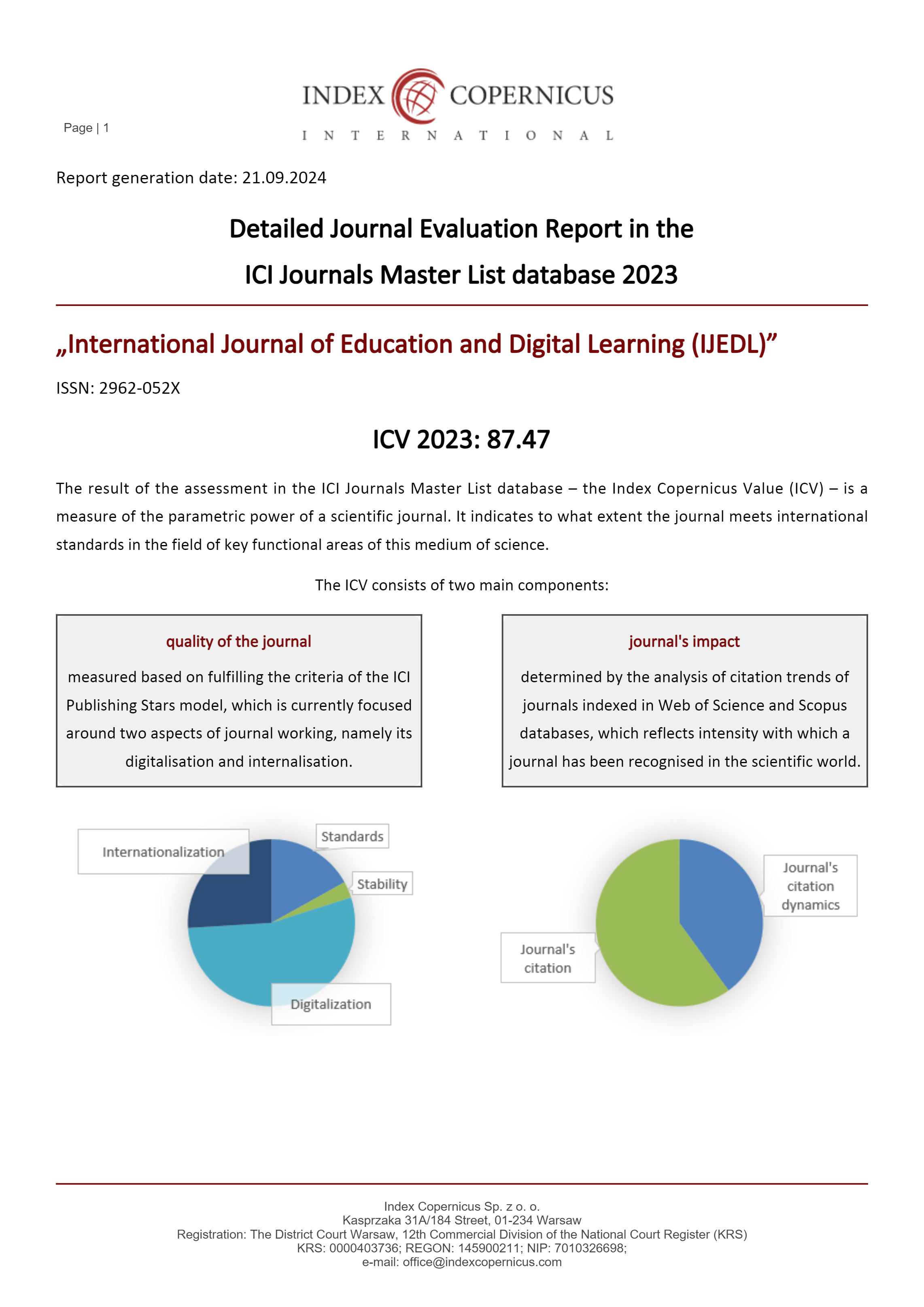Improving Students' Reading Comprehension of Recount Text with the Use of Language Learning Application
DOI:
https://doi.org/10.47353/ijedl.v2i5.141Keywords:
Beelinguapp, Reading Comprehension, Recount TextAbstract
This study aims to assess the impact of utilizing the Beelinguapp program on the reading comprehension skills of second semester students in the Faculty of Social and Political Science, specifically in the area of understanding recount texts. This study utilizes a quantitative approach and follows a pre-experimental design with a one-group pre-test-post-test design. The study population consists of students enrolled in the Faculty of Social and Political Science. The sampling technique use random sampling to select a sample of 31 students in the second semester class. Data collection is conducted through the use of pretest and posttest measures. The Shapiro-Wilk normalcy test is employed for doing normality testing. The Wilcoxon Signed Ranks Test is a non-parametric statistical method employed for data analysis in this research. According to the data, the average score in the pretest and posttest increased from 76.87 to 86.97. The normalcy test indicates that the pretest has a significance value of 0.000, whereas the posttest has a significance value of 0.002. The significance value analysis indicates that the dataset obtained from 31 students does not follow a normal distribution, as evidenced by a significance value of less than 0.05. The analysis results from the test statistic output show that the asymp. sig. (2-tailed) value is 0.000 < 0.05. A significance value smaller than 0.05 indicates that there is an average difference that makes Ha accepted and Ho rejected. It can be concluded that there is a significant effect of the Beelinguapp application to enhance the reading comprehension of recount text of eighth-class students at Faculty of Social and Politics Science. The researcher aspires for this study to serve as a research reference for upcoming research.
Downloads
References
Adriana Giraldo Berrio, L., Bailey, A., & Affidavit, E. (n.d.). ENHANCING READING COMPREHENSION FOR L2 LEARNERS OF ENGLISH: INSIGHTS FROM A COMPARISON OF MOBILE APPLICATIONS BASED ON CURRENT THEORETICAL STANDPOINTS.
Barwick John. (1999). Targeting Text: Photocopiable units based on English text types. Blake Education.
Brown, H. D. (2004). Language Assessment Principle and Classroom Practice. Pearson Education Inc.
Butterfuss, R., Kim, J., & Kendeou, P. (2020). Reading Comprehension. In Oxford Research Encyclopedia of Education. Oxford University Press. https://doi.org/10.1093/acrefore/9780190264093.013.865
Cahyono. (2011a). The Teaching language Skill and English Language Components. University of Malang Press.
Cahyono, B. Y. (2011b). Teaching English by Using Various Text Type. State University of Malang Press.
Cline, F., Johnstone, C., & King, T. (2006). Focus Group Reactions to Three Definitions of Reading (As Originally Developed in Support of NARAP Goal 1). http://www.narap.info
Djuma, R. I., Palengkahu, N., & Sanger, M. B. G. (2021). IMPROVING STUDENT’S READING COMPREHENSION THROUGH SCANNING TECHNIQUE AT THE SECOND CLASS OF THE JUNIOR HIGH SCHOOL (Vol. 1, Issue 1).
Fajriyani Wildanur, Harmayanthi Vera Yulia, & Risnawati Yun. (2022). The Implementation of Beelinguapp in Learning Teaching Process: Can It Enhance Students’ Speaking Skill? Proceeding of International Conference on Education, 11–15.
Fitri Jeni, N., Kuntarto, E., & Noviyanti, S. (2022). Indonesian Journal of Primary Education Analysis of Early Reading Ability in Class II Elementary School Students. © 2022-Indonesian Journal of Primary Education, 6(1), 41–46. http://ejournal.upi.edu/index.php/IJPE/index
Hidayati, D. (2018). STUDENTS DIFFICULTIES IN READING COMPREHENSION AT THE FIRST CLASS OF SMAN 1 DARUSSALAM ACEH BESAR. Ar-Raniry State Islamic University Darussalam.
Juliani, H. (2020). THE EFFECT OF BEELINGUAPP APPLICATION TOWARD STUDENTS’ READING COMPREHENSION USING KWL STRATEGY ON NARRATIVE TEXT OF EIGHTH CLASS AT SMPN 3 ROKAN IV KOTO. Universitas Islam Riau.
Komalasari, A. S., & Riani, D. (2023). EDUKASI MANFAAT LITERASI MEMBACA DAN MENULIS DI SMK PGRI 3 BOGOR. 1(2). https://doi.org/10.32832/jpmuj.v1i2
Kurniawan, Y. I. (2015). THE EFFECT OF THINK ALOUD STRATEGY IN TEACHING READING OF DESCTIPTIVE TEXT ON THE EIGHTH CLASS AT SMP ISLAM MANABUL ULUM GRESIK.
Lambe, L. (2018). Teaching Reading Comprehension In EFL Classroom: A Glance At Some Approaches And Activities. https://api.semanticscholar.org/CorpusID:150232055
Lanchashire Country Council. (2008). Primary Framework Support for Writing Non-Fiction. Lanchashire Country Council.
Langgeng, S. (2011). Improving Students’ Reading Skill through Group Investigation Method at the Eleventh Class of MA.Arrisalah Ponorogo.
Musfiqon. (2012). Pengembangan Media dan Sumber Pembelajaran. Prestasi Pustakaraya.
Sonia, A., & Fisher, H. (n.d.). STUDENTS’ READING TECHNIQUES DIFFICULTIES IN RECOUNT TEXT. In Journal of English and Education (Vol. 2016, Issue 2).
Downloads
Published
How to Cite
Issue
Section
License
Copyright (c) 2024 Dwi Ima Herminingsih, Latifatul Isro'iyah, Sindhu Rhineksha Mukti

This work is licensed under a Creative Commons Attribution 4.0 International License.













